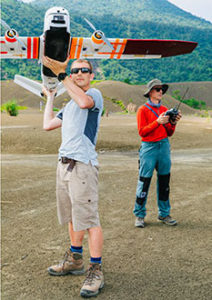Researchers from the University of Bristol have developed a drone designed to improve forecasting of volcanic eruptions.
The specially adapted drone, called Titan, has reportedly gathered data from never-before-explored volcanoes, enabling local communities to better forecast future eruptions.
Titan has been developed as part of the Above project, which brings together researchers from the University of Bristol, the University College London and other academic institutions from across the world, all with previous hands-on experience of using aerial robotics to study volcanic emissions.
Dr Kieran Wood, from the University of Bristol’s department of aerospace engineering, said: “The Above campaign was the successful culmination of several years of development and planning. This was a rare and exciting opportunity to have so many leading researchers from around the world, all with previous field-work experience, focused on the same goals.
“It was very important that we were as ready as possible for this one, hence we had refined the technology over several prior expeditions.”

According to the Wood, measurements need to be collected very close to active vents and – at hazardous volcanoes such as Manam in Papua New Guinea where the experiment was completed – drones are the only way to obtain samples safely.
There, miniaturised gas sensors, spectrometers and direct sampling devices were attached to the drone. The team was the able to fly the drone 2km high and 6km away to reach Manam’s summit, where it captured gas samples that were then analysed within hours.
Following the sampling, the team then calculates the ratio between sulphur and carbon dioxide levels in a volcano emissions, which is said to be critical in determining how likely an eruption is.
Following the fieldwork, the researchers raised funds to provide drone operations training to Rabaul Volcanological Observatory staff to assist in monitoring efforts. The funds were also used to buy computers, solar panels and other technology to enable the local community to communicate via satellite from the island.







